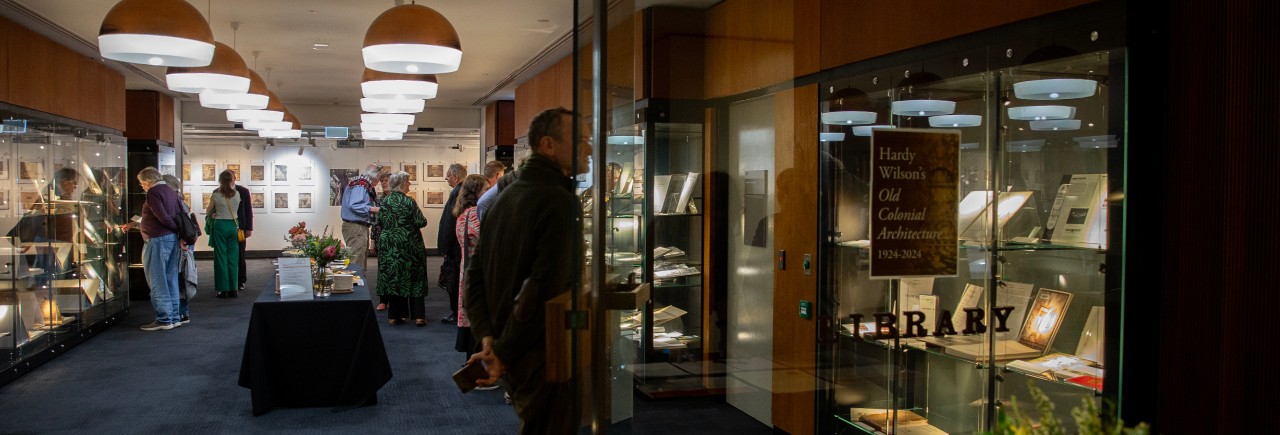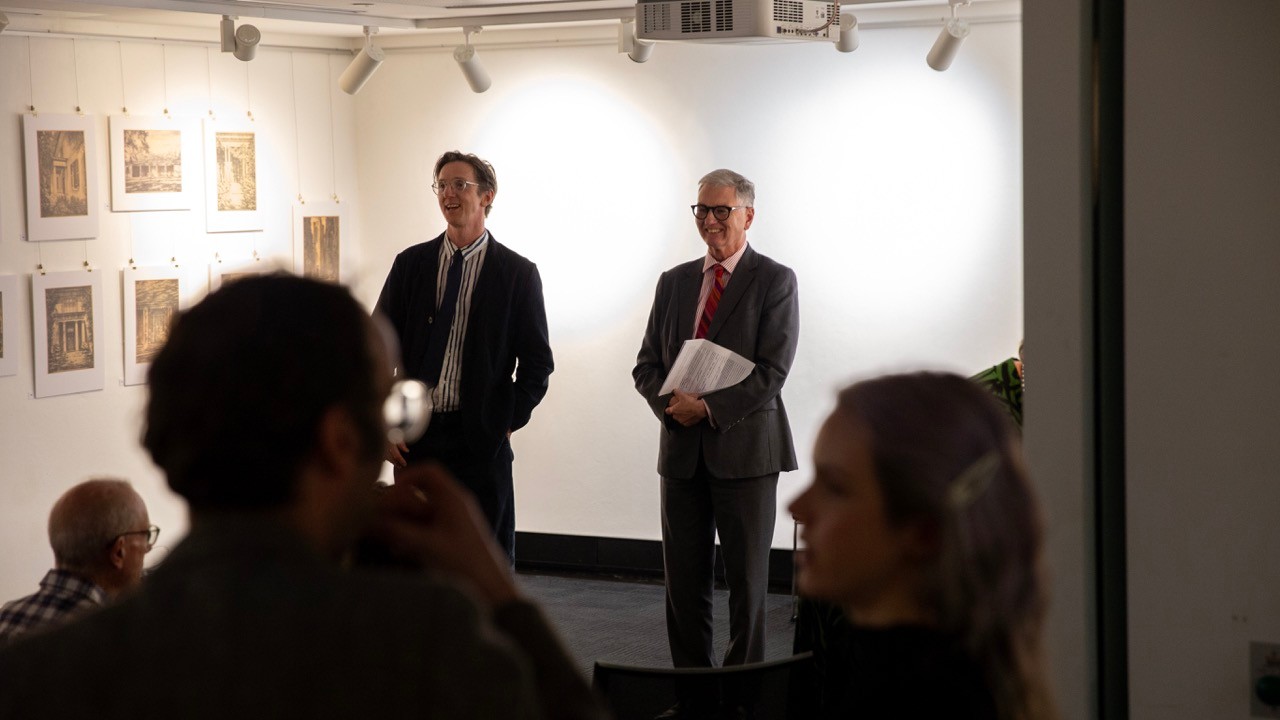Hardy Wilson’s Old Colonial Architecture 1924-2024 exhibition

Published in 1924, Hardy Wilson’s book Old Colonial Architecture in New South Wales and Tasmania was the first major publication dedicated to the documentation and conservation of Australian buildings.
William Hardy Wilson was born at Campbelltown, in 1881, the great grandson of early NSW colonist Caleb Wilson. He attended Newington College, where he captained the First XV Rugby team and was awarded the School Drawing Prize. He went on to study at the Sydney Technical College.
After early work with architects Kent & Budden, Wilson embarked on a long period abroad in 1905 during which he developed his artistic technique. He travelled extensively in Italy and the United States, and when he returned in Sydney in 1910, he was primed to embark on his architectural career proper. Wilson completed a string of houses in Sydney over the coming years, including Merion, for artist Lionel Lindsay, in Wahroonga (1911); Eryldene, also on the upper North Shore in Gordon for the linguist, literary scholar and camelia enthusiast E.B. Waterhouse (1913); and his own house, Purulia, Wahroonga (1916).
In 1912, Wilson began a decade-long project to record the early colonial architecture of Australia, which would eventually culminate in the publication of Old Colonial Architecture in New South Wales and Tasmania in 1924.
100 years on, this exhibition draws attention to the book’s creation, examines its enduring presence and influence in Australian architecture, and contextualises it in Wilson’s biography and wider body of published work.
In doing so the exhibition highlights Wilson’s artistic ability and his catalytic role in architectural publishing in Australia. It also raises questions about how we evaluate his work considering his outmoded and odious social views, which became apparent in his later writing. From the historically transformed vantage point of the 21st century, the exhibition asks visitors to reconsider Wilson’s legacy. Why has his romantic and peaceable vision of the architecture of the early colonies proven so durable and natural to his readers and admirers?
This exhibition was curated by Associate Professor Cameron Logan (Sydney School of Architecture, Design and Planning) and Hector Abrahams and Olivia Salkeld (Hector Abrahams Architects) in collaboration with Rare Books and Special Collections.
Items from the Library’s Rare Books and Special Collections are featured, alongside items generously lent by Hector Abrahams, Zeny Edwards, Glenn Harper, Geoff and Melanie Lovell, Julie Cracknell and Peter Lonergan, Dr. Clive Lucas OBE, the National Trust of Australia (NSW), and the Schaeffer Fine Arts Library.
This exhibition was launched on Thursday 22 August and will be on display on level 2 of Fisher Library until the end of semester 1, 2025.




